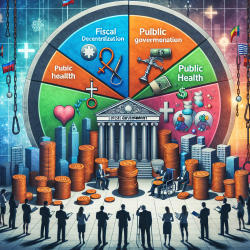Artificial intelligence (AI) is transforming the landscape of mental health care, particularly in the screening and early detection of psychosis in adolescents. According to the research article "Artificial intelligence-assisted psychosis risk screening in adolescents: Practices and challenges" by Cao XJ et al., AI technologies such as chatbots and large-scale social media data analysis are showing promise in identifying at-risk youth. This blog aims to help practitioners improve their skills by implementing the outcomes of this research or by encouraging further exploration.
Key AI Technologies in Psychosis Risk Screening
AI technologies can significantly enhance the accuracy, speed, and coverage of psychosis risk screening. Here are two key methods discussed in the research:
- Chatbots: These AI-driven conversational agents interact with users in natural language, offering real-time assessments based on textual dialogues. Chatbots like Woebot have been shown to reduce symptoms of anxiety and depression through daily conversations and mood tracking.
- Large-Scale Social Media Data Analysis: By analyzing social media posts, AI can detect linguistic and behavioral patterns indicative of psychosis risk. Studies have demonstrated high accuracy in identifying mental health conditions through platforms like Facebook and Twitter.
Benefits of AI-Assisted Screening
AI-assisted psychosis risk screening offers several advantages:
- Improved Speed and Timeliness: AI can quickly identify individuals at risk, enabling early intervention and treatment.
- Enhanced Accuracy and Objectivity: AI algorithms analyze vast amounts of data to provide more precise assessments.
- Increased Coverage: AI tools can reach a broader audience, including those in remote or underserved areas.
Ethical Considerations
While AI technologies offer significant benefits, they also pose ethical challenges. The research emphasizes the importance of adhering to the four biomedical ethical principles:
- Respect for Autonomy: Ensuring informed consent and protecting the autonomy of adolescents.
- Nonmaleficence: Safeguarding privacy and preventing harm from data misuse.
- Beneficence: Ensuring the technology benefits both patients and society.
- Justice: Ensuring equitable access to AI tools for all adolescents.
Future Directions
The research suggests three main directions for the future development of AI-assisted psychosis risk screening:
- Nonperceptual Real-Time Screening: Utilizing technologies like 5G and the Internet of Things to enable real-time data collection and analysis.
- Reducing Costs: Making AI tools affordable to ensure widespread access.
- Improving Usability: Designing user-friendly AI tools that are easy to use regardless of the individual's technical knowledge.
For practitioners in online therapy, incorporating AI-assisted screening tools can significantly enhance the quality of care. By staying informed about the latest advancements and ethical considerations, practitioners can better serve their adolescent clients.
To read the original research paper, please follow this link: Artificial intelligence-assisted psychosis risk screening in adolescents: Practices and challenges.










